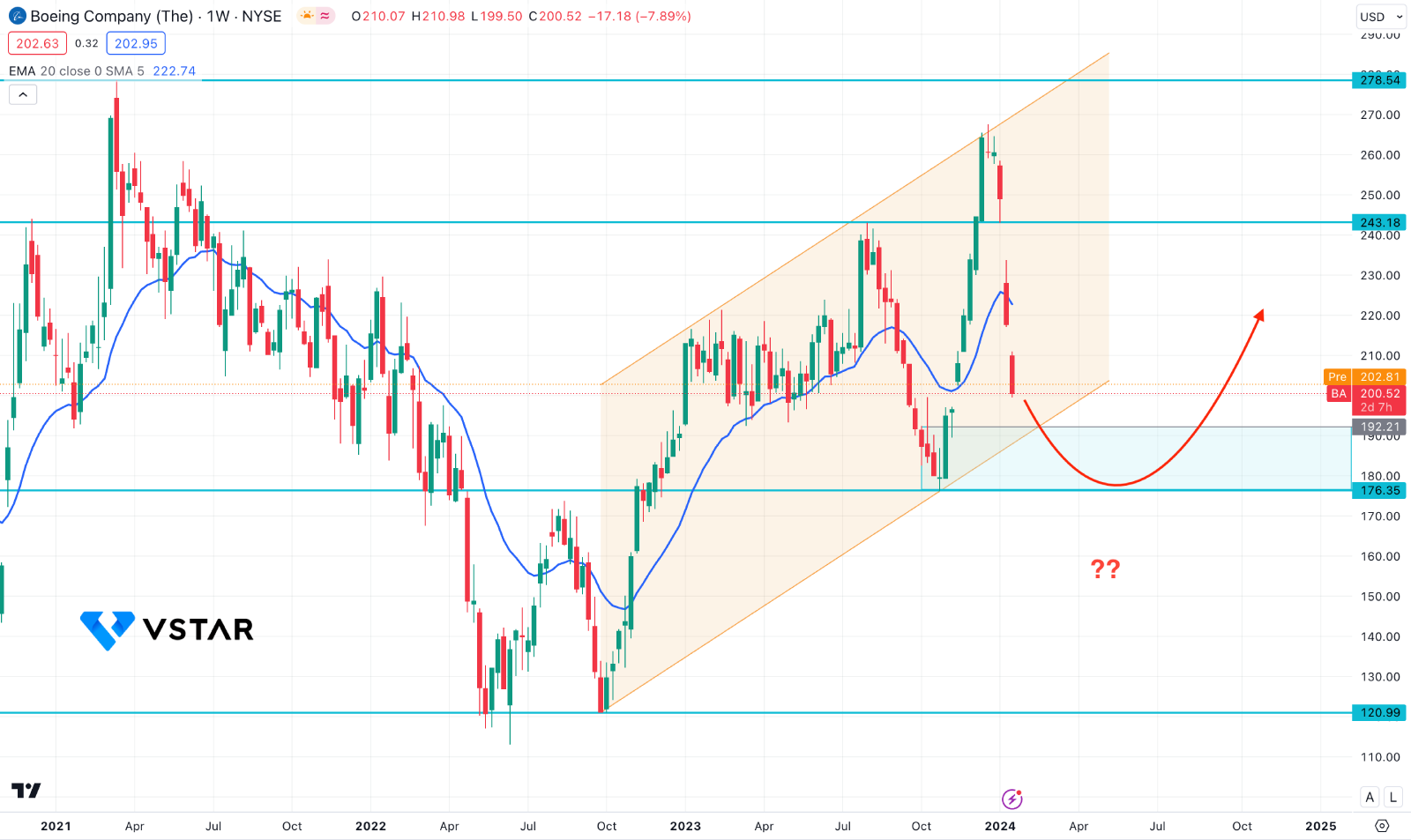Over the previous five years, Boeing has led investors through a turbulent ordeal. The company initially encountered challenges about its 737 MAX, which resulted in an 18-month grounding. Subsequently, it encountered a sales decline caused by the pandemic.
Boeing Company Faced A Production Threat
The most recent setback transpired last week when a pressurization loss occurred at 16,000 feet aboard an Alaska Air Group-operated 737 MAX due to a door seal detaching during flight. Presently under investigation by the Federal Aviation Administration (FAA), the incident can potentially affect approximately 200 comparable aircraft on a global scale.
Initial investigation indicates a manufacturing error rather than a design defect, implying a comparatively uncomplicated resolution. Conversely, this occurrence exacerbates the damage to Boeing's standing as the company attempts to regain the confidence of its investors. Furthermore, the FAA will probably intensify its examination of Boeing's production lines, which could result in potential delivery disruptions or implications for the accreditation of subsequent designs.
Analysts Opinion On Boeing Stock (BA)
Wall Street has duly acknowledged these developments. Wells Fargo recently downgraded Boeing from overweight to equal weight, assigning the stock a $225 price target instead of the previous $280 target. However, Bank of America decreased its price target from $275 to $255 but maintained its buy rating.
While the Alaska Air incident appears to have a potentially resolvable resolution, the accumulated challenges faced by Boeing throughout the years complicate any assessment of this incident in isolation. Since their peak values five years ago, the company's stock has declined by 50%.
Boeing is confronted with the critical task of reestablishing its credibility among investors. To attain this objective, it will be imperative to confront and eradicate enduring quality control challenges.
BA Stock Technical Analysis

In the weekly chart of Boeing stock price, the recent market crash came with a counter-impulsive bearish pressure with multiple weekly candle formations. Moreover, the most recent candle came below the 20-week support, which is above the near-term demand zone.
In this structure, investors should monitor how the price reacts in the 192.21 to 176.55 demand zone. As the long-term bullish trend is intact, a bullish recovery from this zone could extend the channel, targeting the 278.54 resistance level.
On the bearish side, the primary target for the downside pressure would be the 192.00 level. However, a prolonged selling pressure below the 176.00 level could lower the BA stock price towards the 120.99 support level.




